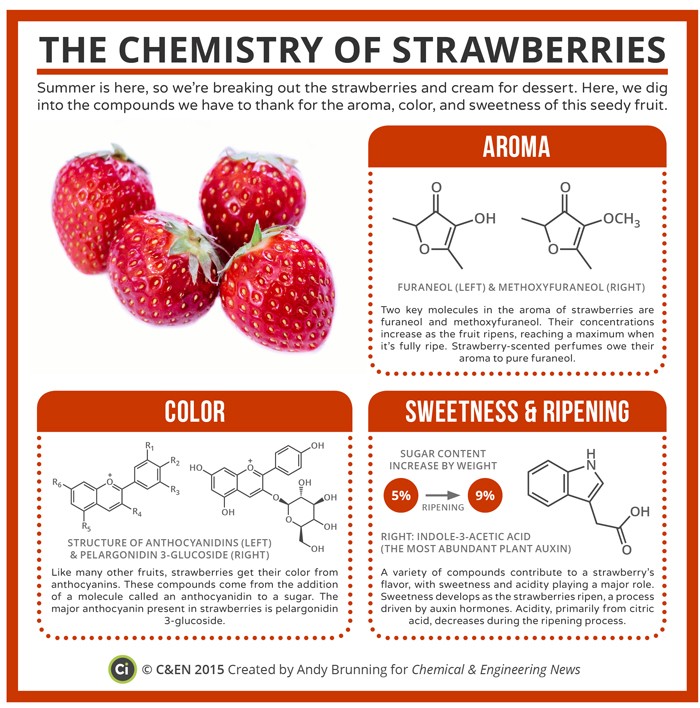I don’t think I’m alone in feeling a little disappointed in our fine British summer this year. Those of us in the office here at Asynt HQ that adore the warmer weather have been determined to embrace what little summer we’re experiencing though, and there have been fresh strawberries eaten by the punnet load (or from the handy and rather elegant DrySyn MULTI kit, as the case may be)!

One of the extra benefits to our HQ having such a wonderful rural location is having a farm only a few minutes away where you can go and pick your own strawberries and raspberries so we’re very spoilt!
I wanted to look a little closer at this fine summer fruit though and, as usual, the Periodic Graphics team at Compound Chemistry were one step ahead, giving me all the information I needed.
One issue we find with our favourite summer fruit is the shelf life of it. Typically we eat our strawberries either the same day or the very next day after purchase because otherwise they begin to rot.
From a life-cycle view this is good as the strawberry doesn’t really care about what we wanted for pudding on Friday, or if we have enough space in the refrigerator; it cares about continuing its overall existence!
Plants burn a lot of energy to produce an appealing fruit, the effort from which pays off when birds or mammals eat them and expel the seeds. Ripening hormones activate genes for enzymes that build colour (anthocyanins) and scent (Furaneol & Methoxyfuraneol), convert starch to sugar to sweeten the fruit and break down cellulose and pectin to soften it.
As a worst case scenario, if no one comes along to eat the fruit it has a “Plan B” all ready; the fruit will decompose to distribute the seeds locally. That doesn’t help it if it’s doing so in our refrigerator so we’re honour bound to eat them up quickly! It’s a tough job, but somebody’s got to do it! We need to keep the Asynt chemists well fed, too, so that they carry on developing fantastic new products like the DrySyn OCTO parallel reaction station!






